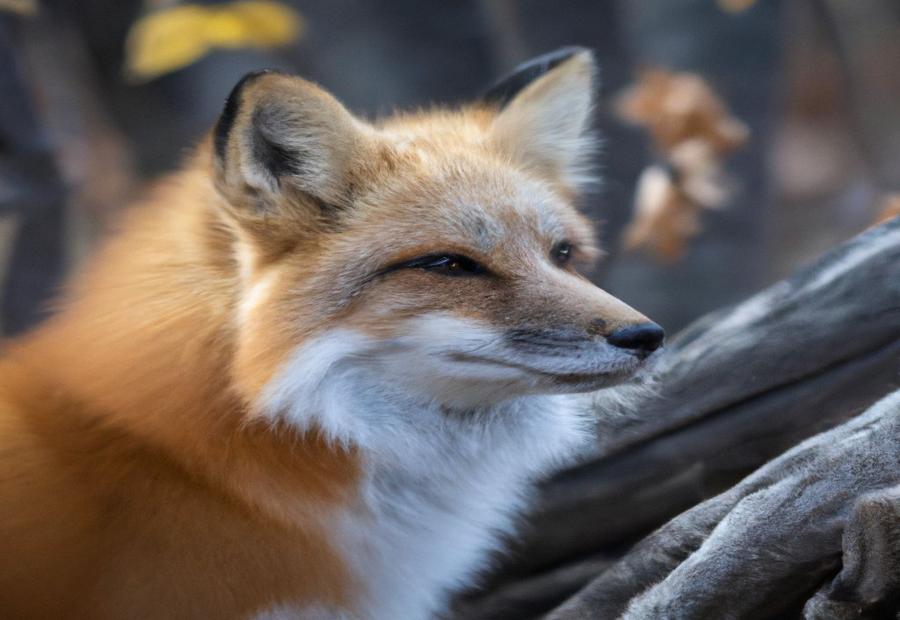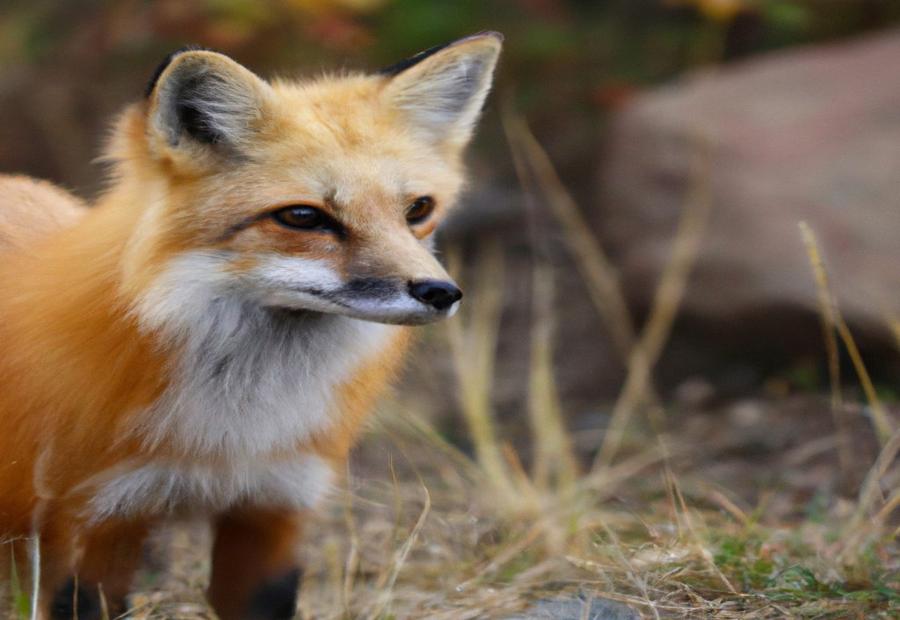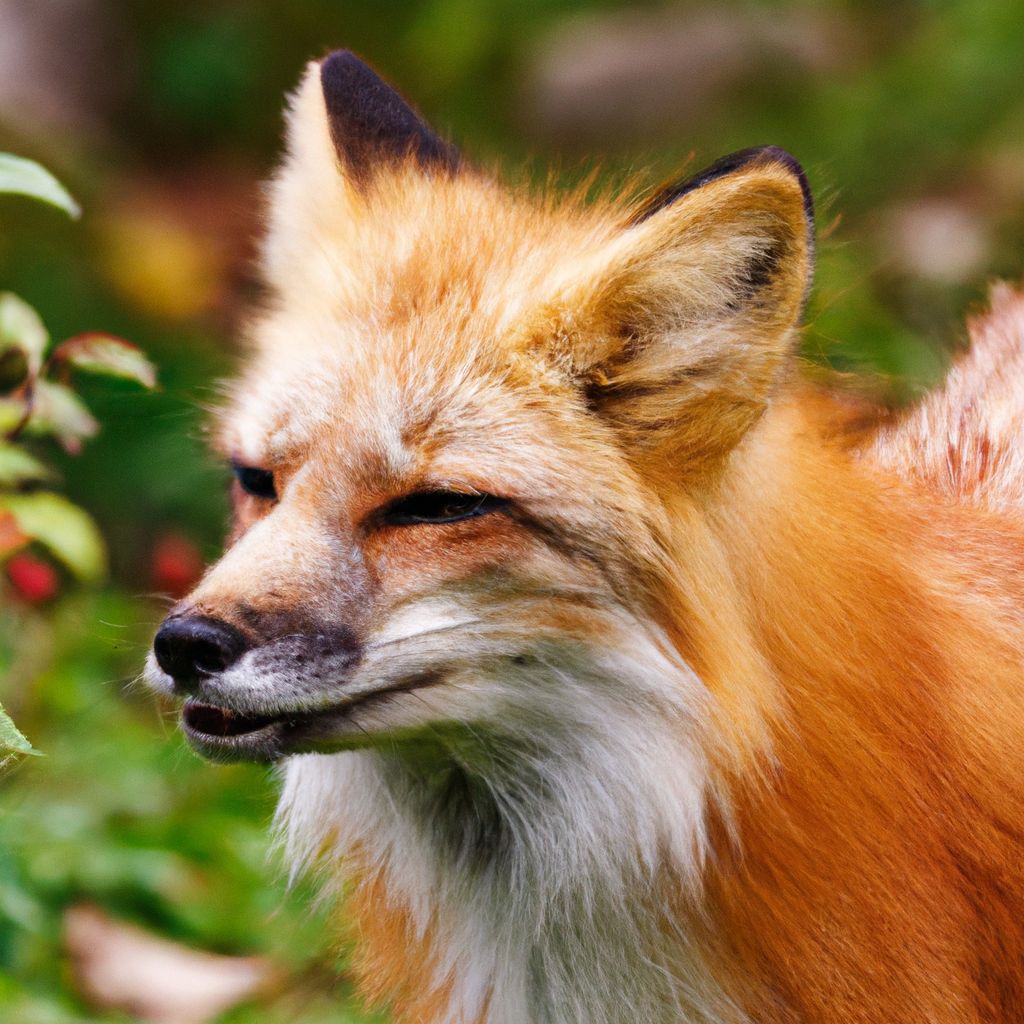The red fox, scientifically known as Vulpes vulpes, is a fascinating species of fox that is widely distributed across the Northern Hemisphere. Understanding their lifespan is essential in appreciating their life cycle and conservation efforts. Here is an overview of the lifespan of Vulpes vulpes in both the wild and captivity:
Vulpes Vulpes (Red Fox) are known for their adaptability and survival skills in various habitats. The lifespan of Vulpes vulpes can vary depending on several factors such as genetics, environment, availability of food, predation, and human activities. These factors greatly influence the lifespan of these magnificent creatures.
In the wild, red foxes generally have a lifespan of 2 to 5 years. However, there are variations in lifespan based on different geographical regions. Factors such as climate, habitat conditions, and availability of resources play a significant role in influencing the lifespan of red foxes in different areas.
Notable cases have documented red foxes living beyond the average lifespan. An exceptional case is the record of a red fox living up to 14 years in the wild. Such cases provide valuable insights into the potential longevity of these animals.
Predation and threats are major factors that contribute to the mortality of red foxes. Natural predators such as coyotes, wolves, and large birds of prey pose a significant threat to adult and juvenile red foxes. Habitat loss, human activities, and hunting can also affect their lifespan.
For red foxes kept in captivity, their lifespan can be significantly extended with proper nutrition and care. Captive red foxes have been known to live up to 12 to 15 years with appropriate veterinary care, access to a balanced diet, and a well-maintained environment.
Understanding the lifespan of Vulpes vulpes is crucial for conservation efforts and understanding the dynamics of red fox populations. By addressing threats and promoting responsible stewardship, we can contribute to the preservation and longevity of this incredible species.
Contents
What is the Lifespan of Vulpes Vulpes?

Photo Credits: Foxauthority.Com by Kenneth Garcia
Curious about how long Vulpes Vulpes, commonly known as the red fox, can live? Let’s take a closer look at the factors that influence their lifespan. From habitat to diet, various elements play a part in determining how long these cunning creatures roam our planet. Join me on this exploration of the lifespan of Vulpes Vulpes, where we’ll uncover the fascinating details that shape their time on Earth. Get ready for a wild journey!
Factors Affecting the Lifespan of Vulpes Vulpes
To understand the Factors Affecting the Lifespan of Vulpes Vulpes, let’s examine the table below:
| Factors | Description |
| Nutrition | A balanced diet of small mammals, birds, fruits, and vegetables is crucial for the health and longevity of Vulpes Vulpes. |
| Habitat | A suitable habitat with enough food, minimal human interference, and appropriate den sites can contribute to a longer lifespan. |
| Predators | Predators like wolves, bears, and larger carnivores can pose a threat to the survival and lifespan of Vulpes Vulpes. |
| Disease and Infections | Diseases and infections, including rabies and manage, can significantly impact the lifespan of Vulpes Vulpes if not treated or managed. |
| Human Interference | Habitat destruction, pollution, and hunting can negatively affect the population and lifespan of Vulpes Vulpes. |
These factors emphasize the importance of a suitable environment, proper nutrition, and protection for Vulpes Vulpes to promote a longer lifespan. Protecting their habitats and minimizing human interference also contributes to the well-being and survival of this species. Ensuring access to diverse prey and preventing disease spread through proper management and veterinary care are essential. By addressing these factors, we can contribute to the longevity and conservation of Vulpes Vulpes populations.
How Long Do Red Foxes Live in the Wild?
Curious to know how long our clever red fox friends live in the wild? Let’s dive into the fascinating world of the red fox lifespan. From exploring the unique variations in lifespan across different regions to uncovering surprising facts backed by scientific research, we’ll discover just how resilient and tenacious these wily creatures can be. Prepare to be amazed by the intriguing stories and statistics that await us as we delve into the intriguing world of red fox longevity.
Red Fox Lifespan in Different Regions
Red foxes in different regions have varying lifespans. The lifespan of red foxes is influenced by factors such as food availability, habitat quality, climate conditions, predation, and human activities. It is important to note that the lifespans mentioned in the table are average lifespans and individual red foxes may have shorter or longer lives depending on specific circumstances. Regions with high predator populations like coyotes or wolves may result in shorter lifespans for red foxes. Additionally, the availability of food and human activities such as hunting and habitat destruction also impact the lifespans of red foxes in different regions.
To ensure the conservation and well-being of red fox populations, it is crucial to protect their habitats, manage predator populations, and minimize human impacts. These efforts are essential in providing red foxes with the best possible chances to live their lives fully in various regions.
What Are the Longest Recorded Lifespans of Red Foxes?

Photo Credits: Foxauthority.Com by Bradley Moore
What’s the secret to a remarkably long life for the red fox? Let’s uncover the extraordinary lifespans of these cunning creatures in our exploration of notable cases of red foxes living a long life. Buckle up as we dive into fascinating facts and remarkable stories that will leave you in awe of the longevity achieved by some of these elusive and intelligent animals. Prepare to be amazed by the resilience and tenacity of the red fox as we unveil their incredible feats of survival and endurance.
Notable Cases of Red Foxes Living a Long Life
|
These cases highlight the importance of proper care, access to resources, and protection from predators for the lifespan of red foxes.
What Are the Main Causes of Death for Red Foxes?
Red foxes, these cunning and adaptive creatures, face a multitude of challenges in their lifespans. Delving into the realm of their mortality, let’s uncover the main causes of death for these captivating creatures. In this section, we will shed light on the predators and threats that pose a significant risk to the survival of red foxes. From elusive hunters to environmental hazards, we’ll explore the harsh realities faced by these mesmerizing beings. So, brace yourselves as we embark on this journey into the perils that befall our beloved red foxes.
Predators and Threats to Red Foxes
Predators and threats are integral factors that heavily influence the lifespan and survival of red foxes in their natural habitat. In the wild, red foxes confront various predators, including wolves, coyotes, and bears, who prey on them when other sources of food are scarce. Bird predators like golden eagles and great horned owls display remarkable hunting skills and pose a constant danger to red foxes.
Moreover, human activities such as habitat destruction and hunting also represent a significant threat to the well-being of red foxes. Diseases and parasites, such as rabies and ticks, weaken the immune system of red foxes, making them more vulnerable. Additionally, competition with other species like raccoons and skunks can result in limited food availability and territorial disputes for red foxes.
In order to safeguard red foxes, conservation efforts should primarily focus on the preservation of their habitats, effective disease control, and the mitigation of conflicts between humans and wildlife.
How to Increase the Lifespan of Red Foxes in Captivity?
Want to know how to increase the lifespan of red foxes in captivity? Discover the secrets in this section! We’ll dive into the crucial factors that play a role in enhancing their longevity. From nutrition to specialized care, we’ll uncover tips and tricks to ensure these captivating creatures thrive in human care. Get ready to explore the world of red foxes and learn how to provide them with the best possible environment for a long and healthy life!
Nutrition and Care for Captive Red Foxes
Captive red foxes require proper nutrition and care to maintain their health and well-being. A well-balanced diet, appropriate living conditions, and regular veterinary check-ups are crucial for their longevity and overall quality of life.
1. Diet:
Captive red foxes should be fed a diet that closely resembles their natural food sources. This includes lean meats, fish, fruits, vegetables, and supplements to ensure they receive all the necessary nutrients. A diet rich in protein not only enhances their health but also strengthens their immune system.
2. Hydration:
It is important to always provide captive red foxes with fresh and clean water. Monitoring their water intake, especially during warmer months or when nursing, is essential to ensure they remain adequately hydrated.
3. Enclosure:
Captive red foxes require a spacious and secure enclosure that allows for natural behaviors and provides opportunities for exercise. The enclosure should have hiding spots and enrichment items to promote both physical and mental well-being.
4. Veterinary Care:
Regular veterinary check-ups are crucial for captive red foxes. It is important to consult an experienced veterinarian specializing in exotic animals who can assess their overall health, administer necessary vaccinations, and promptly address any medical concerns.
5. Environmental Enrichment:
Creating a stimulating environment with toys, climbing structures, and hiding spots is essential to keep captive red foxes mentally stimulated and engaged. This type of enrichment promotes natural behaviors and helps prevent boredom.
By understanding and meeting the nutritional and care needs of captive red foxes, their lifespan can be maximized, and their overall well-being and quality of life can be ensured.
Frequently Asked Questions
How long do red foxes live?
On average, red foxes live 3-4 years in the wild, but in captivity, they can live up to 10-14 years. The maximum recorded longevity of a red fox is 21.3 years.
What is the lifespan of different fox species?
The lifespan of different fox species varies. Arctic foxes can live up to 4 years in the wild and up to 14 years in captivity. Fennec foxes may live up to 10 years in the wild and 14 years in captivity.
Do red foxes live in small groups?
Yes, red foxes are usually found in pairs or small groups, consisting of families. The young of the mated pair stay with their parents to assist in caring for new kits.
How long is the gestation period of red foxes?
The gestation period of red foxes lasts for 52 days. After this period, the female red fox gives birth to a litter of pups.
What are some colloquial names for the red fox?
In colloquial British English, the red fox is often referred to simply as “the fox.”
Are there different color variants of the red fox?
Yes, there are different color variants of the red fox. Cross foxes have reddish brown fur with a black stripe down the back and another across the shoulders, while silver foxes range from strong silver to nearly black.


